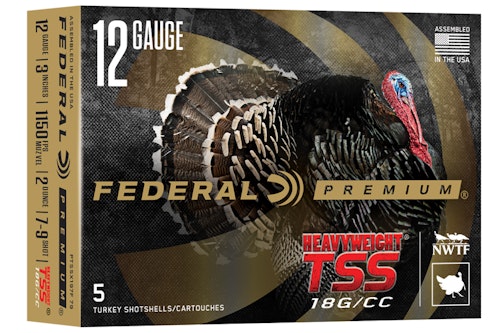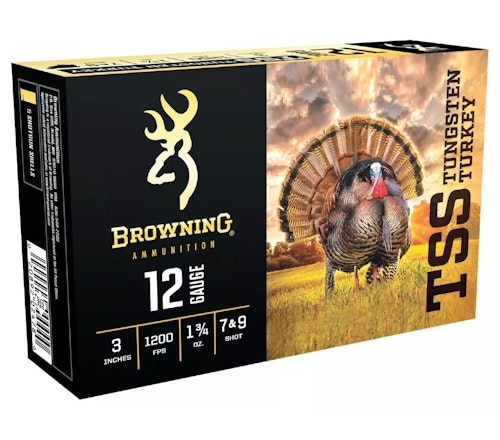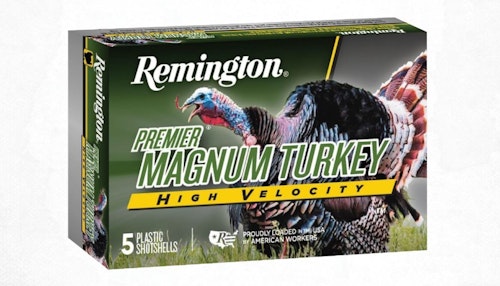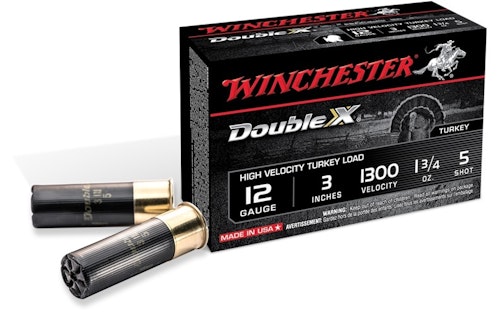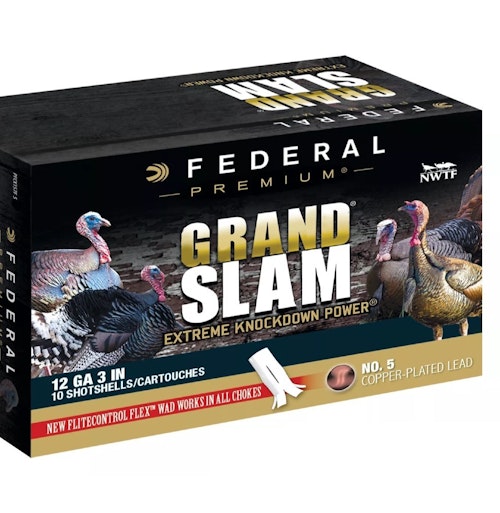Americans have been killing turkeys for longer than shotguns have existed, but over the past 50 years, hunting the wily longbeard has become a passion for many, and even an obsession for some. Fact is, some of your customers practically live for turkey hunting, biding their time in fall with other “trivial” pursuits like deer and upland game hunting just waiting for the spring gobbler season to roll around.
This passion has led to some of the most incredible advances in guns, chokes and ammunition the firearms industry has seen. Gone are the 36-inch “long tom” shotguns with a fixed full choke shooting the same standard No. 5 shot a hunter might normally use for pheasants or prairie grouse. Now you see purpose-designed turkey guns with changeable turkey super-full chokes shooting shells loaded with tungsten shot protected by high-tech wads. The results are devastating, allowing turkey hunters to kill gobblers at longer distances than ever before.
Even with the new guns and chokes, it’s possible that turkey shotshells have ascended even further up the evolutionary ladder than the guns and gear. Fact is, today’s turkey shell isn’t your grandfather’s gobbler getter — not by a long shot!
Let’s take a look at modern turkey ammo and how it can help you bolster your bottom line.
All About Turkey Shells
Fifty years ago, there weren’t really many shotshells made specifically for hunting turkeys. Now, a person just getting into turkey hunting has so many choices it’s nearly impossible to make a decision on what to use.
From the original gobbler loads with No. 4, 5 or 6 lead shot, technological advancement after advancement has brought us into a whole new era. In those days, a 30-yard shot on a longbeard was considered to be long range by most. Nowadays, a 30-yard shot is a chip shot for many serious gobbler chasers.
Hardened lead shot led the way in these advancements, making turkey shells a little more deadly. This shot patterned a little better and flew a little straighter, putting big smiles on turkey hunters’ faces and big tail fans on the wall. Buffering of this better lead shot made patterns even more consistent, helping them hold tighter to longer distances, especially with the new purpose-designed turkey chokes on the market. Next came higher-quality shot cups or wads, which protected the shot better in the barrel, leading to even better patterns and more deadly payloads.
Then came copper-plated lead shot, and lethality increased another significant leap. The copper-plated shot tends to deform even less in its trip down the barrel, making better patterns possible. Throw in some buffering, and turkey hunters thought they’d reached the pinnacle in innovation.
Then came duplex shot, which combined two or even three different shot sizes in a single shotshell. With these loads, the smaller shot helps produce a fuller, more even pattern, while the larger pellets hit their target harder with more energy than their smaller counterparts. The combination makes for a better overall terminal performance. Would gobblers even have a chance anymore?
That brings us to the latest innovation — Tungsten Super Shot (TSS). While quite expensive, tungsten shot is about 60 percent denser than lead. What that means to a turkey hunter, and to an unsuspecting gobbler, is that a typical No. 5 tungsten pellet at 60 percent heavier than lead is going to hit the target with substantially more energy.
Interestingly, because of the increased mass, hunters can use much smaller shot size than before. Consequently, throwing 2 ounces of No. 7 tungsten shot will hold a fuller, denser pattern than 2 ounces of No. 5 lead shot, with very nearly the same amount of energy delivered to the target.
Now, let’s take a look at some top turkey loads that you might consider carrying in your inventory.
New-School Loads
TSS loads now make up some of the most popular — and most expensive — turkey loads on the market. And many hunters won’t shoot anything else. Here are a few to consider.
Federal Premium
Federal Ammunition sits atop the premium turkey load mountain and continues to expand its TSS offerings. The Federal Premium Heavyweight TSS line is a real turkey killer when combined with the right gun and choke — even in gauges smaller than 12.
Federal says their shot’s tungsten-alloy material has 22 percent higher density than standard tungsten and 56 percent more than lead. The result is the most energy and highest velocities at extreme range. Also, the ammo’s rear-braking Flitecontrol Flex wad yields great performance through ported and standard turkey chokes.
These modern loads are available in 12 and 20 gauge, along with .410 bore. The latest 12-gauge load, introduced in 2021, features 2 ounces of mixed No. 7 and 9 shot. But fair warning: These things don’t come cheap. A box of five has an MSRP of $67.99!
Apex
While not a household name among turkey hunters, Apex likely will be soon, and the company’s Turkey Ninja load is one reason why. This veteran-owned small business located in Mississippi has a lot going for it, including its top-quality turkey shells.
Interestingly, the Turkey Ninja is offered in 28 gauge — a rarity among turkey loads — along with 12 and 20 gauge and .410 bore. The loads use a highly polished No. 8 1/2 tungsten shot, which the company says combines the knockdown power of 8s with the pattern density of 9s, thereby creating the best of both worlds.
Available loads include 2.25- and 2.5-ounce 12-gauge, 1.625-ounce 20-gauge, 1.375-ounce 28-gauge and .875-ounce .410 loads. While slightly less expensive than the Federal offering, these are still high-dollar shells, with a five-pack of 12-gauge shells coming in at about $65.
Browning
This maker of high-quality shotshells has also jumped into the tungsten game with both feet. Browning’s line of TSS Tungsten Turkey loads use the high-density tungsten shot that is 60 percent denser than lead and offer it in duplex loads. Additionally, they load the shot into a buffered loading that yields both consistently tight patterns and maximum downrange energy.
The line includes two 3.5-inch 12-gauge offerings with 2.25 ounces of shot, two 3-inch 12-gauge offerings featuring 1.75 ounces of shot, two 20-gauge options with 1.75 ounces of shot and a .410 bore load featuring .82 ounces of tungsten shot.
MSRP is similar to the other tungsten loads. But for some turkey hunters, who are likely to only shoot a shell or two a season, that’s a small price to pay for the performance boost.
Old-School Loads
All that’s not to say that you can’t kill a turkey stone-cold dead with a non-tungsten load. Two years ago, because of poor planning, I unexpectedly found myself heading into the spring turkey season with no newer, high-tech loads on hand. Digging deep in my hunting cabinet, I found a couple of boxes of 3-inch, 12-gauge No. 5 lead loads that were at least 25 years old. The yellowed price tags read $4.95 on one 10-round box and $5.25 on the other, making them about 4 percent the price of new tungsten loads! Taking them to the range, I found them to pattern quite well out to 40 yards, which was good enough for me. That season, I killed two gobblers with those shells, and my son also killed a tom. The next year I killed another nice longbeard with one. And I still have enough left to hunt for another season or two!
The point is, hunters don’t have to spend half their turkey-hunting budget on one five-round box of shotshells. For hunters who don’t want to fork over $12 to $13 per round, here are some good loads that are still in high demand by hunters and could make a nice addition to your inventory.
Remington
Remington’s Premier Magnum Turkey’s magnum-grade copper-plated shot is protected by the storied company’s Power Piston wad, which yields great patterns when matched with the right shotgun and choke. The shells are also buffered to make patterns even better.
These shells are available in 12 and 20 gauge with No. 4, 5 or 6 shot. They’ve killed plenty of turkeys over the years, despite being considered “outdated” by some hunters. Best of all, they set the hunter back about $2 to $3 per shell — a fraction of what the tungsten loads cost.
Winchester
I’ve killed a lot of birds with Winchester’s Double-X High Velocity Turkey shells over the years. These super-fast loads feature copper-plated lead shot in No. 4, 5 or 6 utilizing the company’s older but proven Grex buffering.
The three available 12-gauge 3-inch loads feature 1.75 ounces of shot leaving the barrel at about 1,300 feet per second (fps), and a 3 1/2-inch load with 2 ounces of shot fired at the same velocity. The 20-gauge load is a 3-inch shell firing 1.3 ounces of shot at a muzzle velocity of 1,200 fps. A 10-gauge load is also available.
Prices run about $2 per round for 20- and 12-gauge loads, and about $3 a round for the 10-gauge offering.
Federal Premium
This company’s Grand Slam load has also accounted for a number of gobblers over my long turkey-hunting career. Utilizing Federal’s very effective FliteControl Flex wad, these loads contain buffered, copper-plated shot. These Flex wads work well in both standard and ported turkey chokes, and they open from the rear for a controlled release of the payload and extremely consistent patterns.
Available loads include a 3 1/2-inch 10-gauge shell, 3- and 3 1/2-inch 12-gauge rounds and 3-inch 20-gauge offerings. The 10-gauge and 3 1/2-inch 12-gauge loads send 2 ounces of shot downrange at about 1,200 fps.
One other really cool thing about these shells is that a portion of the sales proceeds goes to the National Wild Turkey Federation. Price is about $25 per 10-round box, putting it on par with other premium, copper-plated lead turkey ammo offerings.
If you’re not profiting from turkey season, considering putting some of these offerings on your shelves this spring. Turkey hunting is really a big deal to many hunters, and they’re not shy about putting some of their hard-earned income toward chasing the wily gobbler wherever the hunt might lead.

